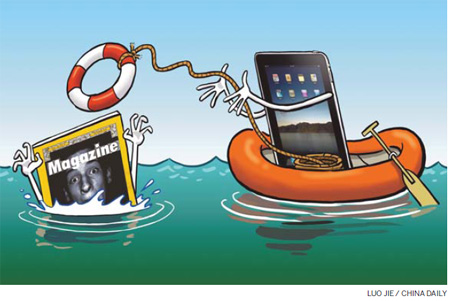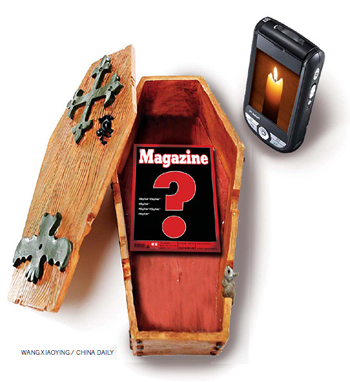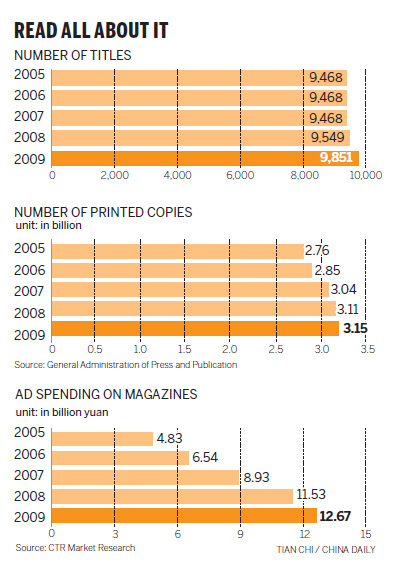Economy
Magazines turning new page in battle for readers
By Jiang Xueqing (China Daily)
Updated: 2010-09-01 09:15
 |
Large Medium Small |
Imaginative design, relevant articles help periodicals thrive in digital age. Jiang Xueqing reports in Beijing.
As global media moguls were slashing budgets and jobs last year, Zhu Xuedong, editor-in-chief of China Weekly, chose a different path and re-launched the magazine in a dynamic new format.
It was a bold move that bucked the international trend but the 43-year-old was more than confident that a "dignified, thoughtful and valuable" current affairs magazine would turn a profit.
Compared to saturated markets in Britain and the United States, Zhu said his research showed the print media market in China had a great deal of potential, thanks largely to an increase in readership and a growing desire among the public for in-depth, analytical news coverage.
Spending on advertising with national magazines in the US alone fell 19.3 percent last year, according to preliminary figures released by the Nielsen Company, a global marketing research firm. Last month, the Washington Post Company sold Newsweek for $1, with the 77-year-old publication reportedly suffering operating losses of $44 million since 2007.
Yet, despite print media worldwide facing serious challenges from the Internet and devices like Apple's iPad, magazines have experienced rapid growth in recent years in China and many experts agree with Zhu that the print media is holding strong with a large proportion of China's 1.3 billion people.
Among the most popular magazines, Sanlian Lifeweek has seen distribution and advertising increase 15 to 20 percent every year since 2005, while Chinese National Geography (circulation 800,000) has maintained an annual growth of 30 to 40 percent.
An independent audit by BPA Worldwide also found that Vista, a news digest published every 10 days, sold 650,000 copies per issue in the first half of this year, up from 490,000 in the second half of 2009.
Industry analysts say the boom is closely linked to the economic development that began in 2003, which boosted public demand and enabled readers to afford magazines, which are more expensive than newspapers.
Magazines also remain popular with advertisers. China's gross advertising spending hit 277 billion yuan ($40 billion) in the first half of this year, with about 7.1 billion yuan of that going to magazines, an increase of 21 percent year-on-year, according to Beijing-based CTR Market Research.
"Compared to television and newspapers, magazines started late in China and have always had a relatively small market share," said Daphne Wu Chuanhui, managing director of Caixin Media, which publishes Century Weekly, a national news magazine.
A decade ago, if someone said they worked for a business magazine "no one would have any idea what they were talking about", she said. "But the fact that the market share is tied to GDP growth and consumer power means the industry has a bright future."
Better with age
Victor Visot, chief executive of Hachette Filipacchi Medias Asia Pacific, a global consumer magazine publishing group, is also optimistic and said that, like a fine wine, China's magazine market needs to mature.
"The Chinese market is rather new compared to other parts of the world," he said. "But it's growing because it is sustained by the overall growth of the economy."
Chen Zhong, editor-in-chief of Nanfengchuang, agreed that the decade-old market for news magazines is on a lifting track and is still far from reaching a saturation point.
"Take news magazines for example. You could count on both hands almost every popular title in the country," he said.
A total of 9,851 registered magazine titles published more than 3 billion copies in 2009, generating a combined operating revenue of 14.6 billion yuan ($2.1 billion), according to figures from the General Administration of Press and Publication (GAPP).
However, the statistics, which show the number of printed copies soared from just 558 million in 1978 to 2.5 billion in 1985, suggest the industry experienced a plateau for the last 25 years.
|
 |

